Introduction
The first LeSS conference started with assumptions, questions and unknowns.
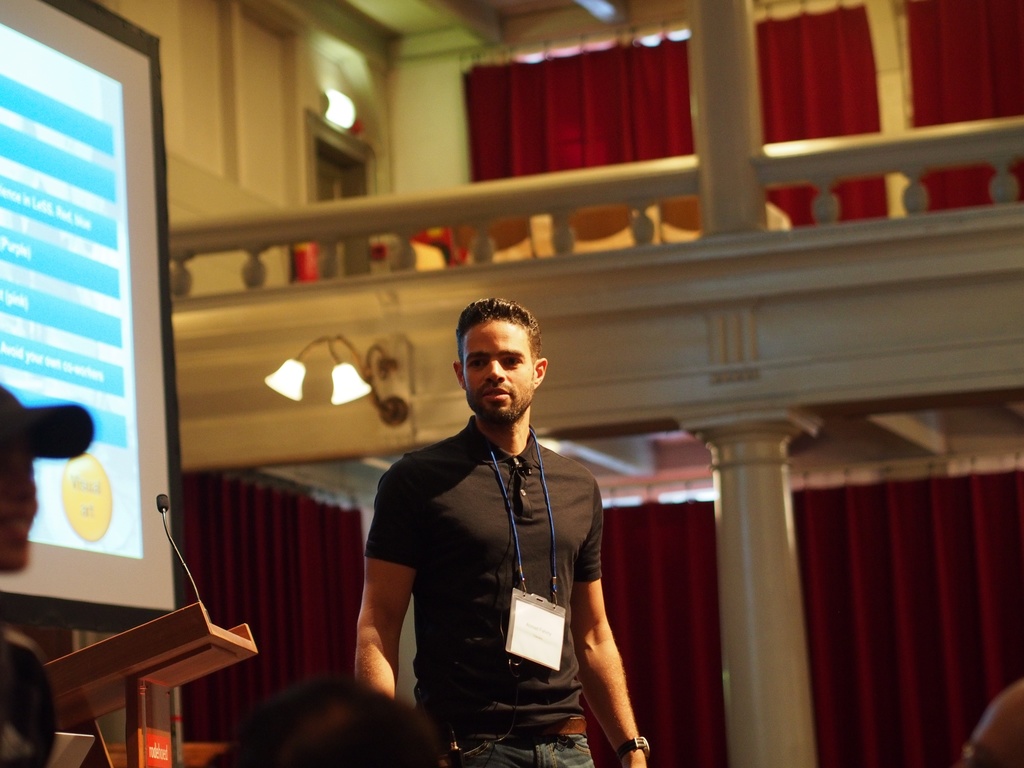

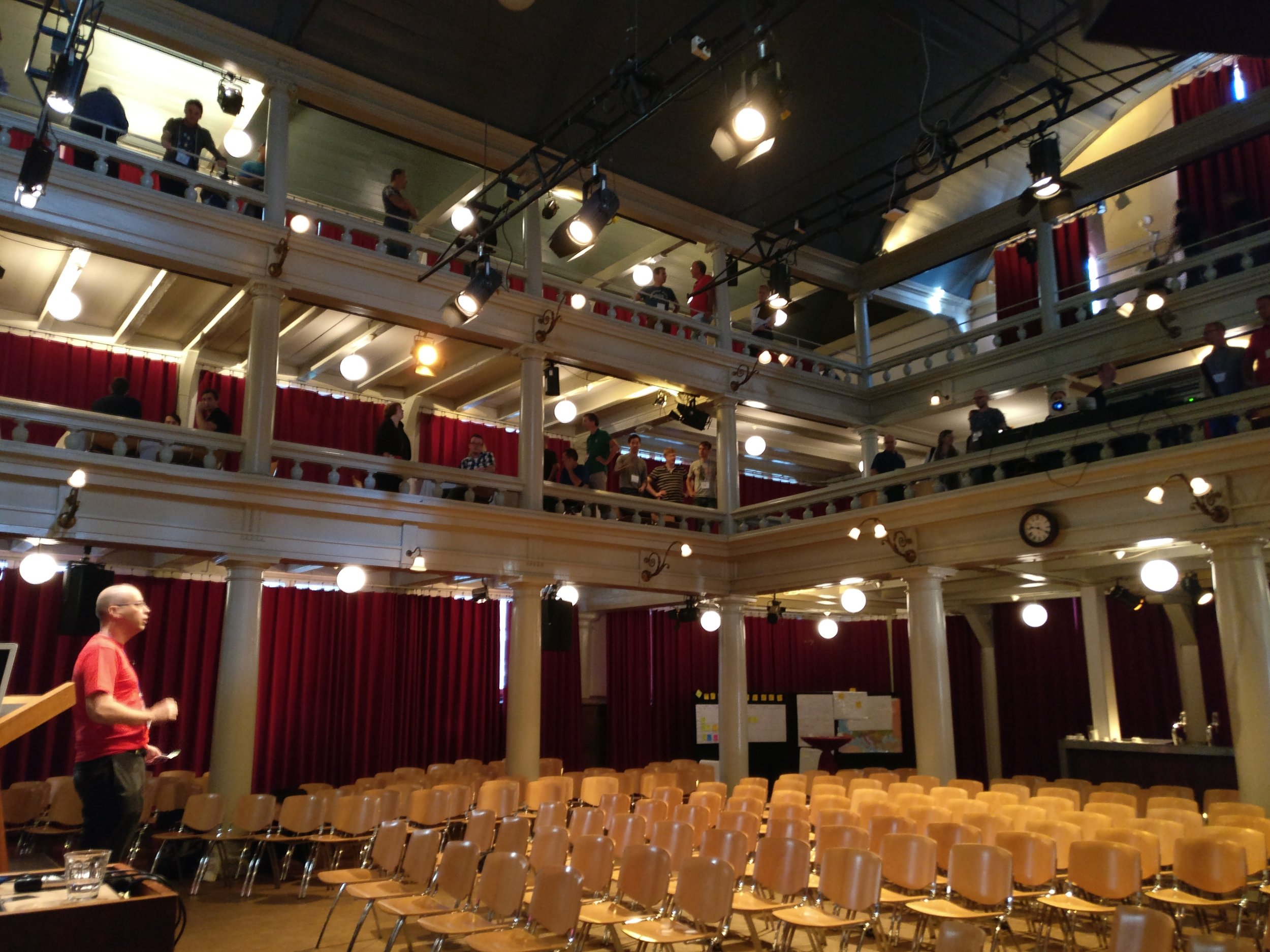
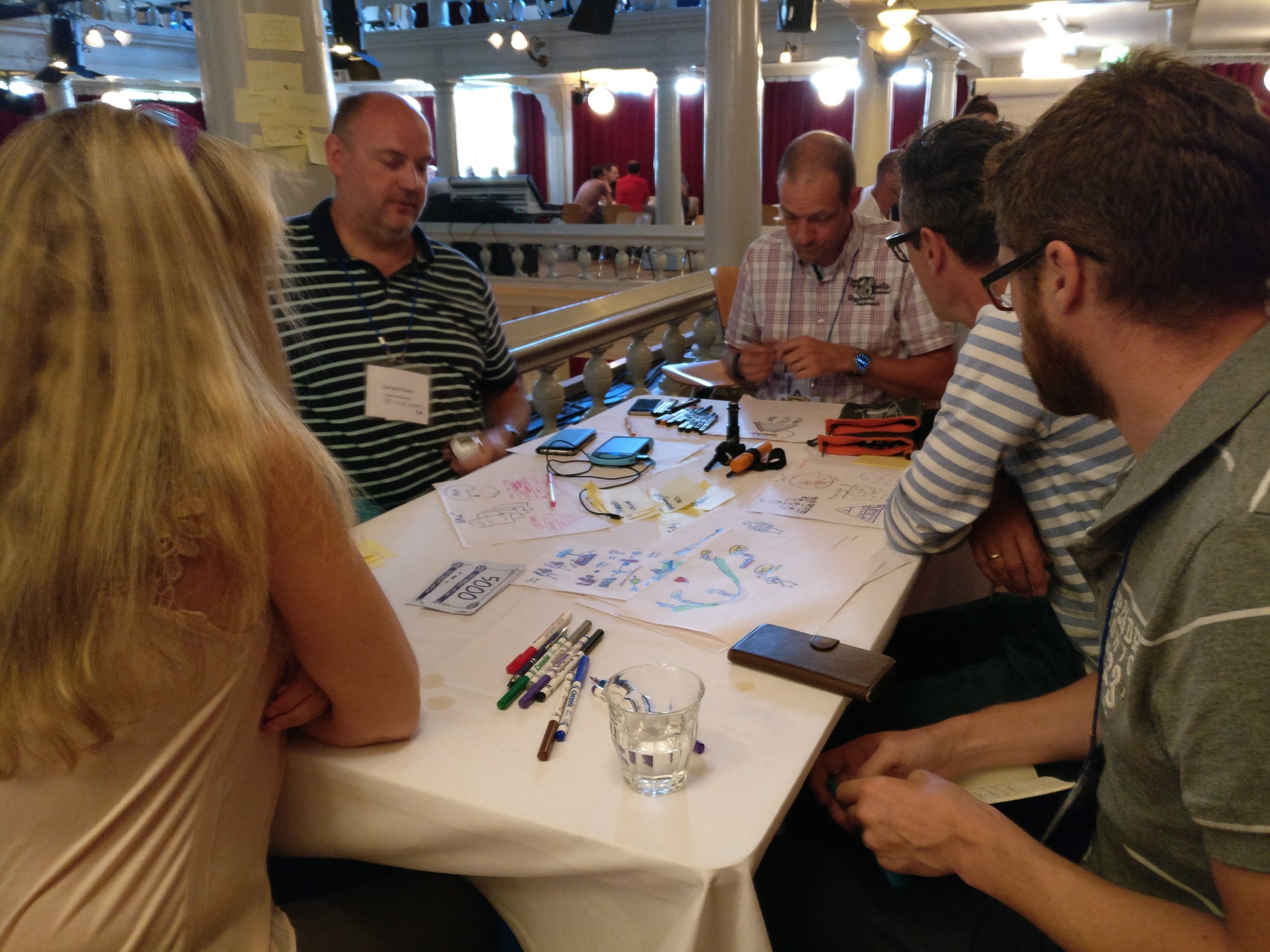
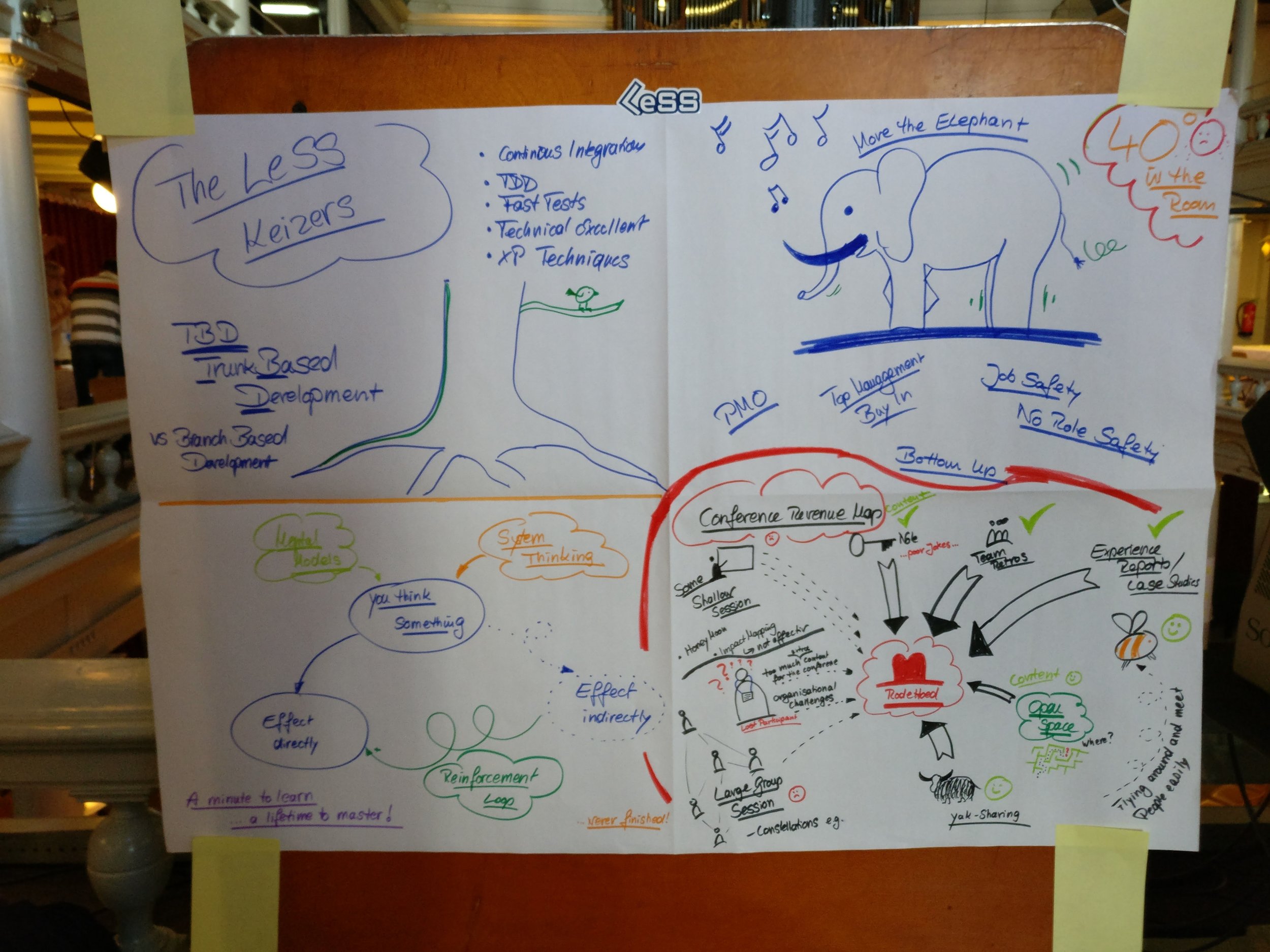
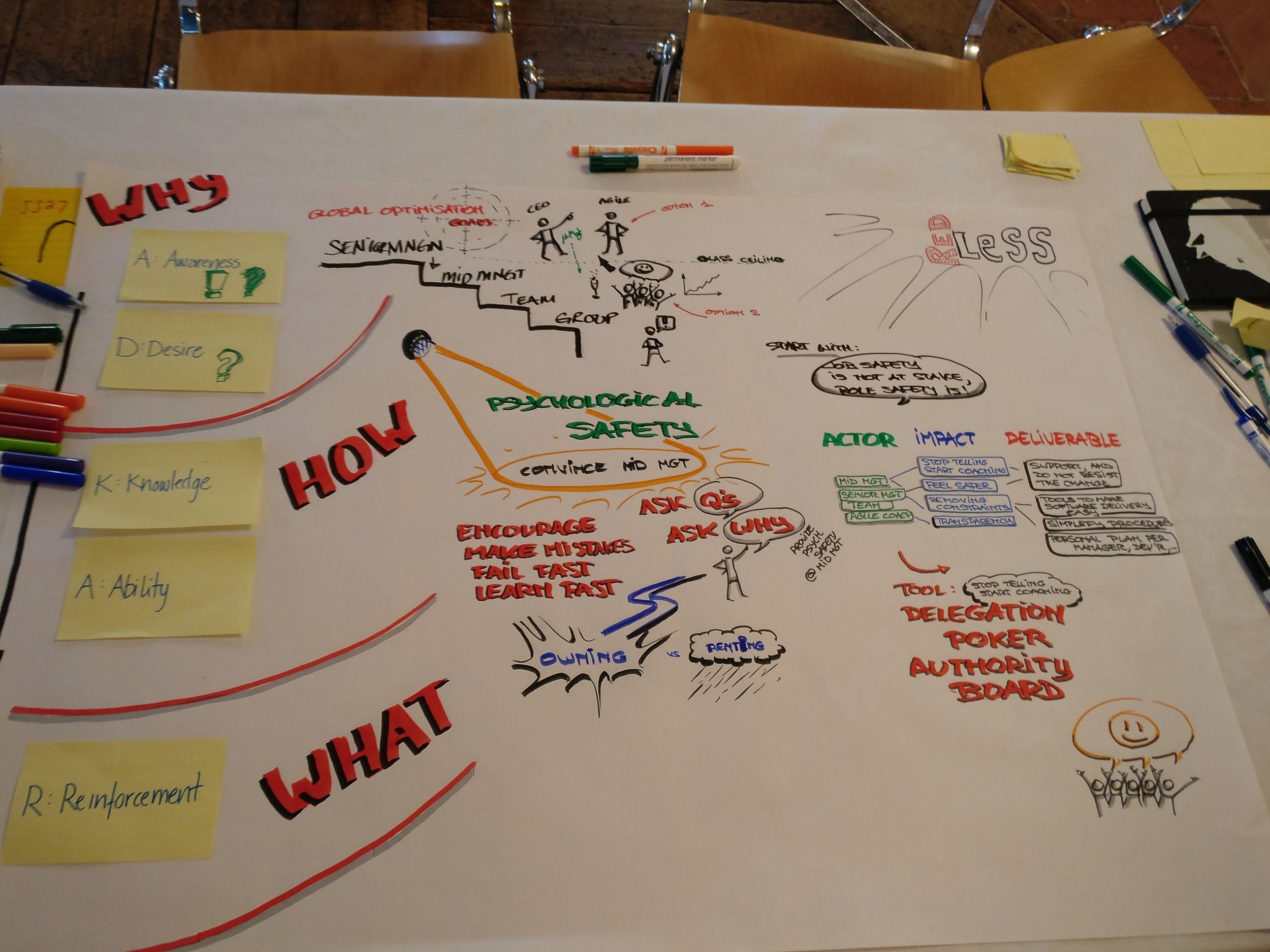
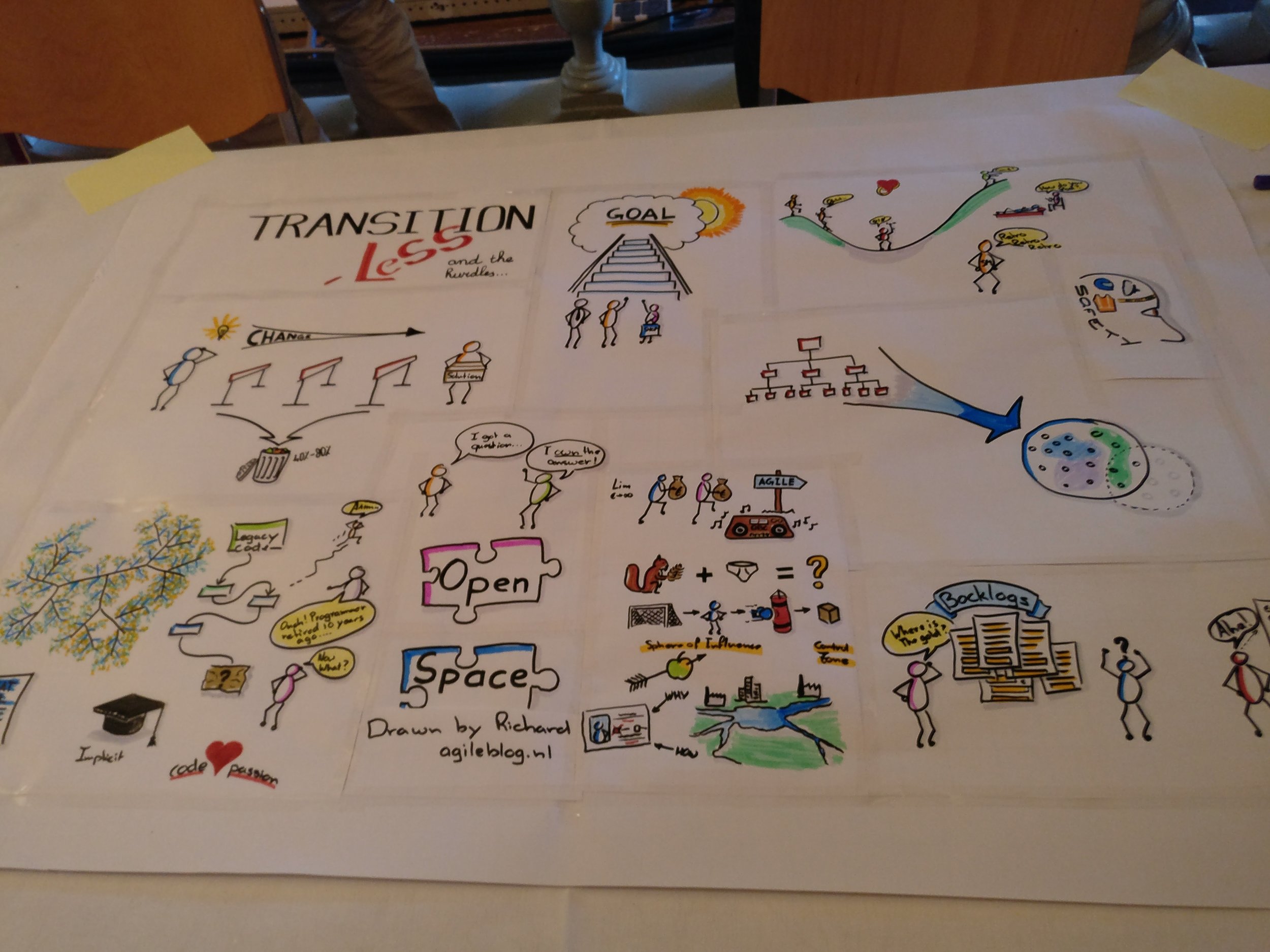
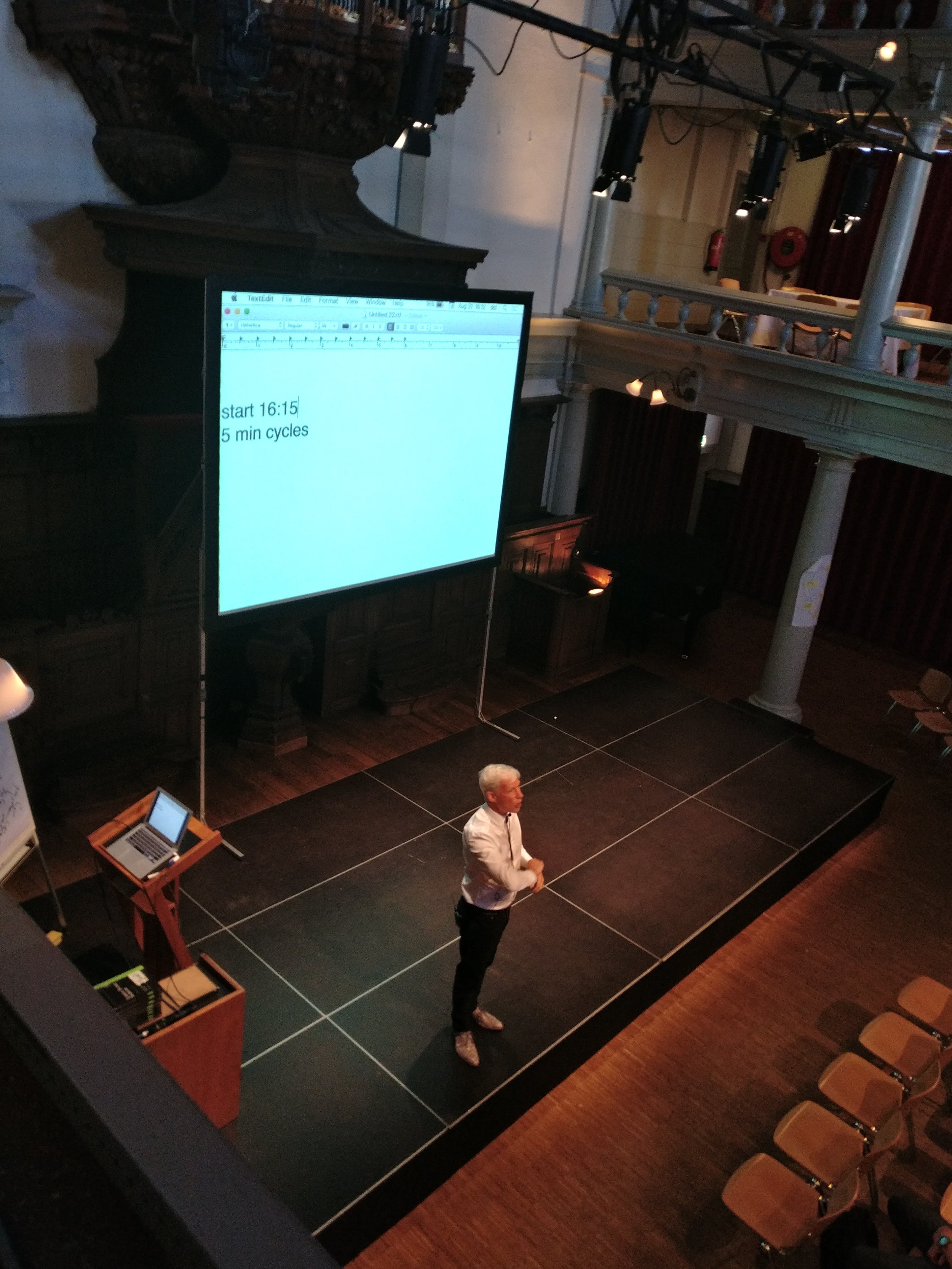
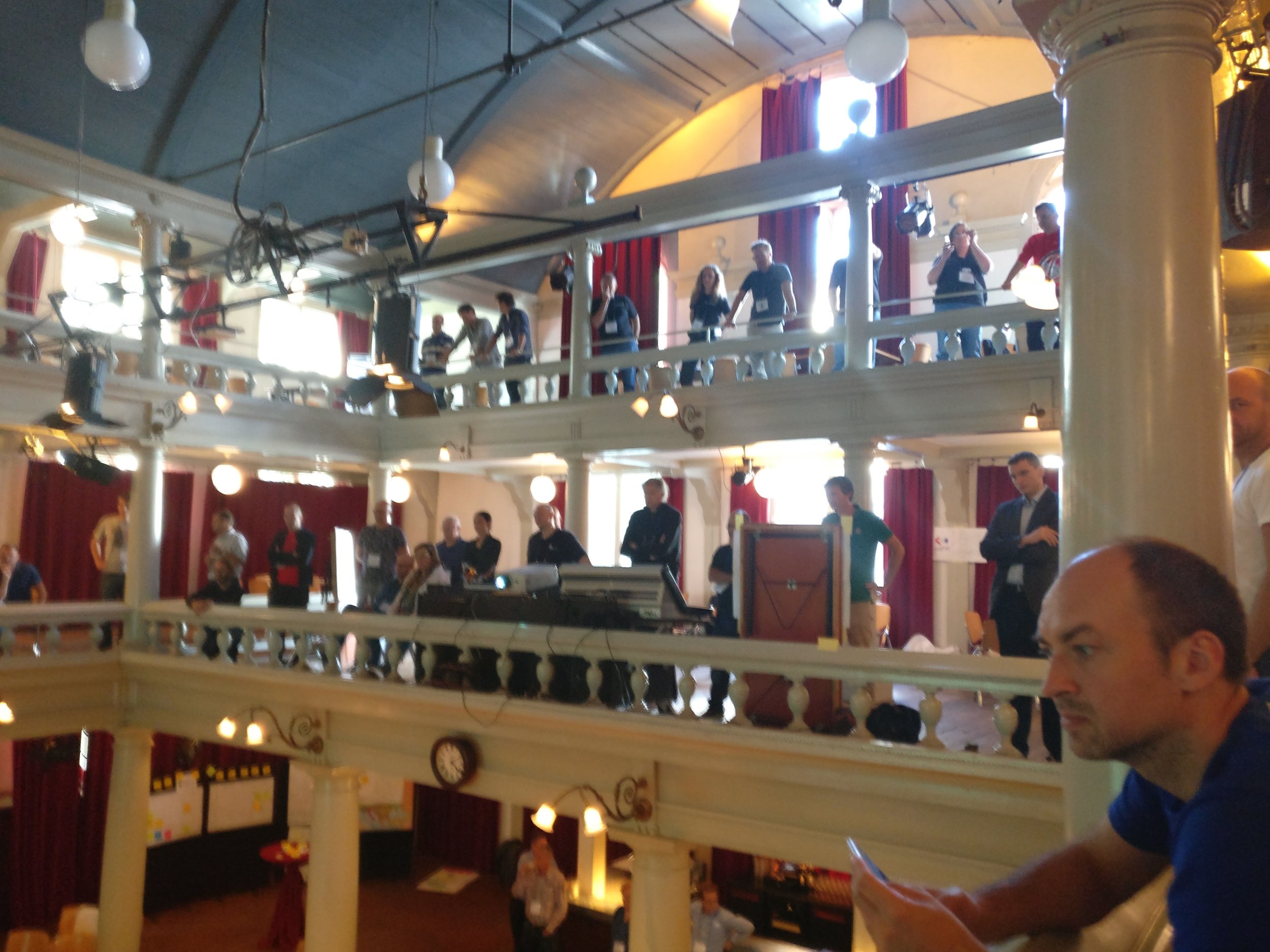
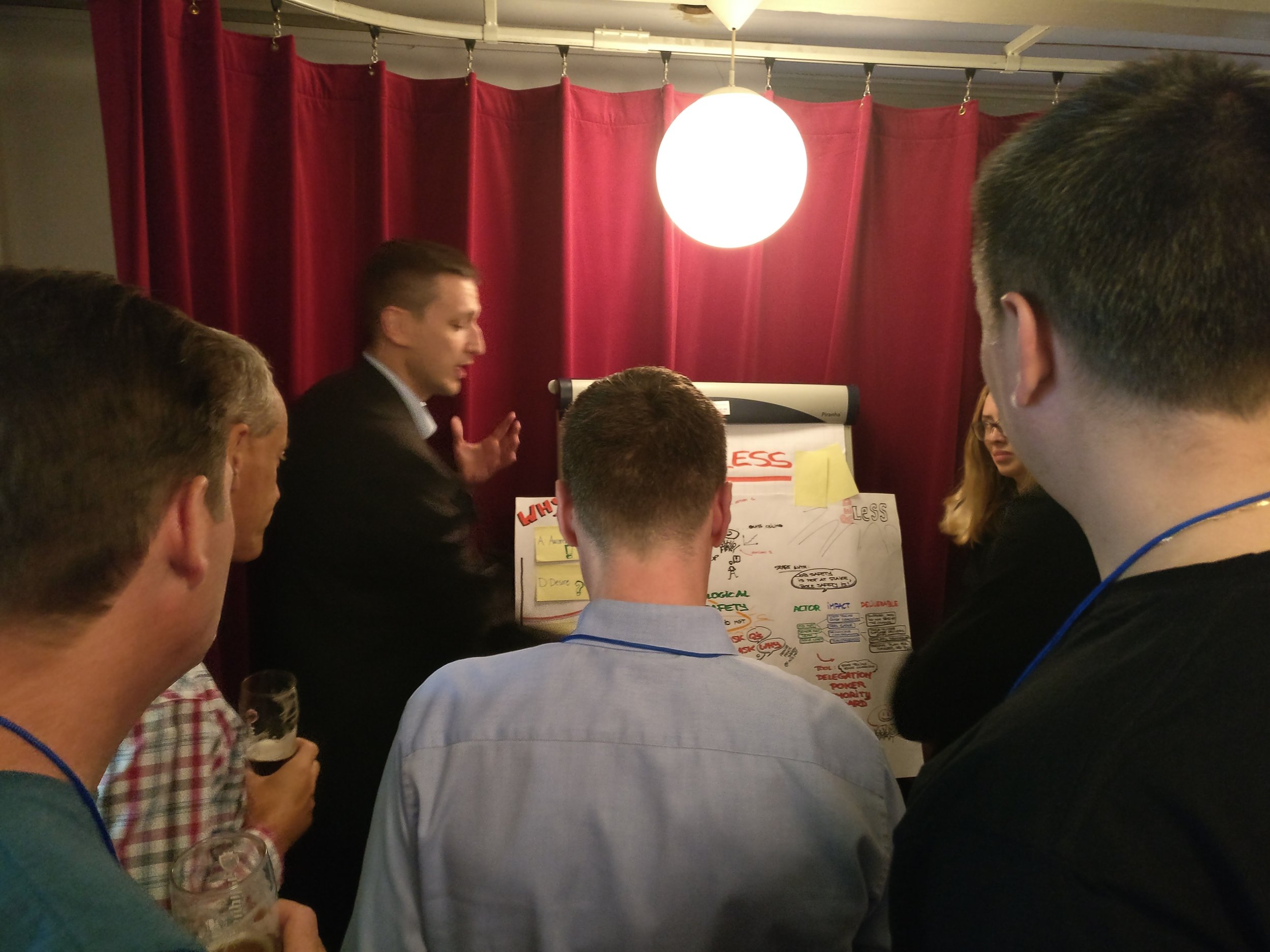
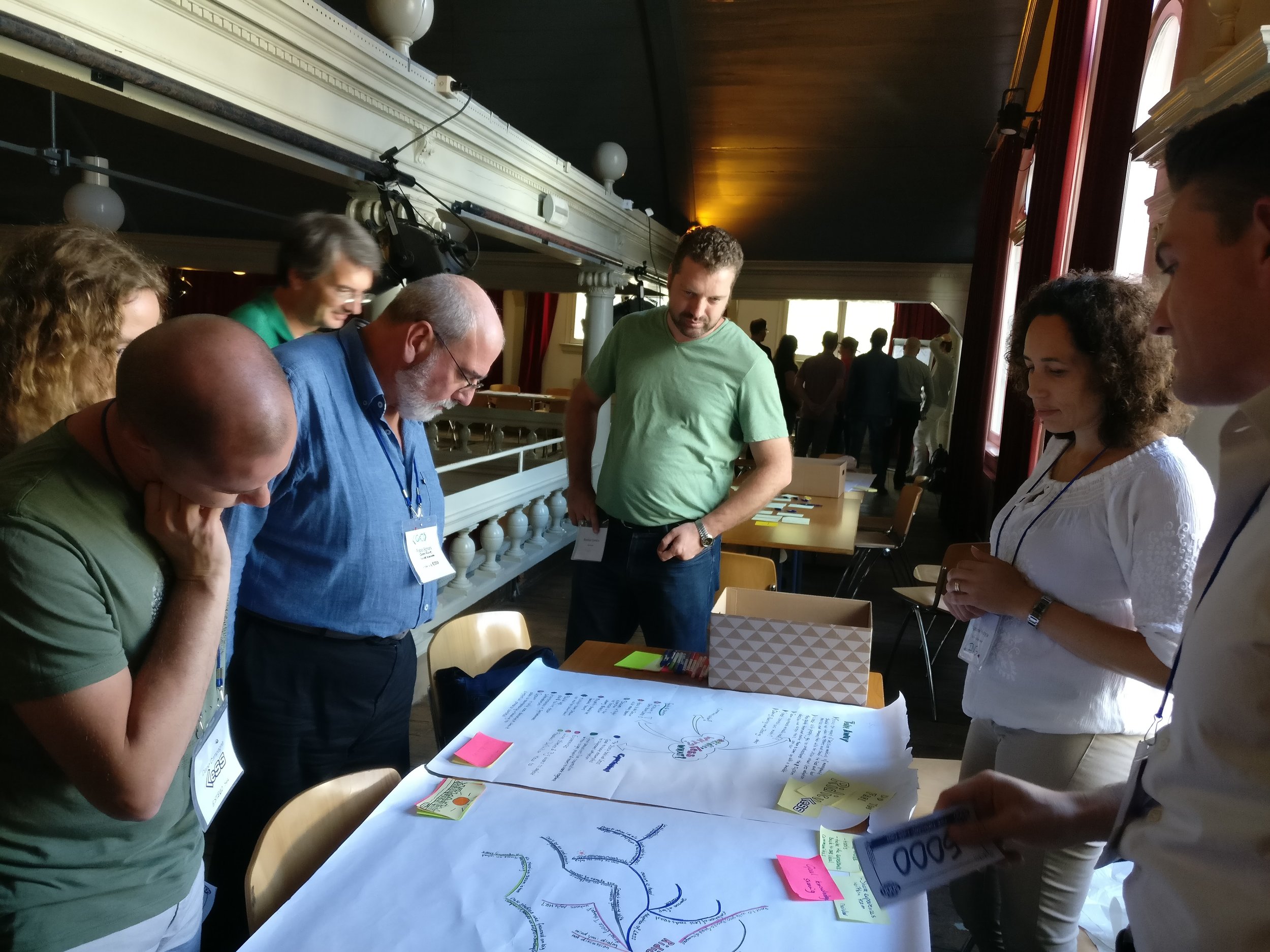
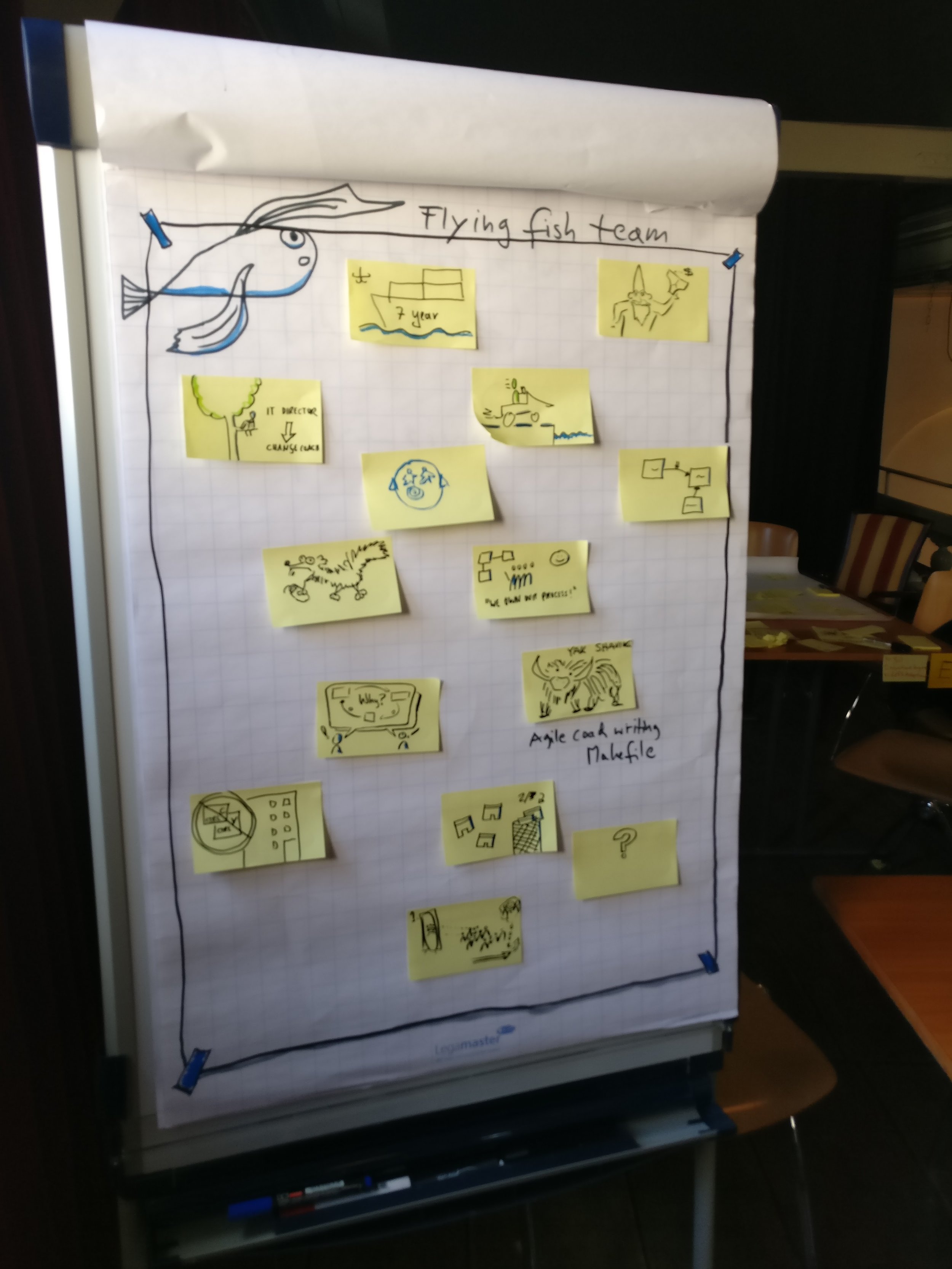
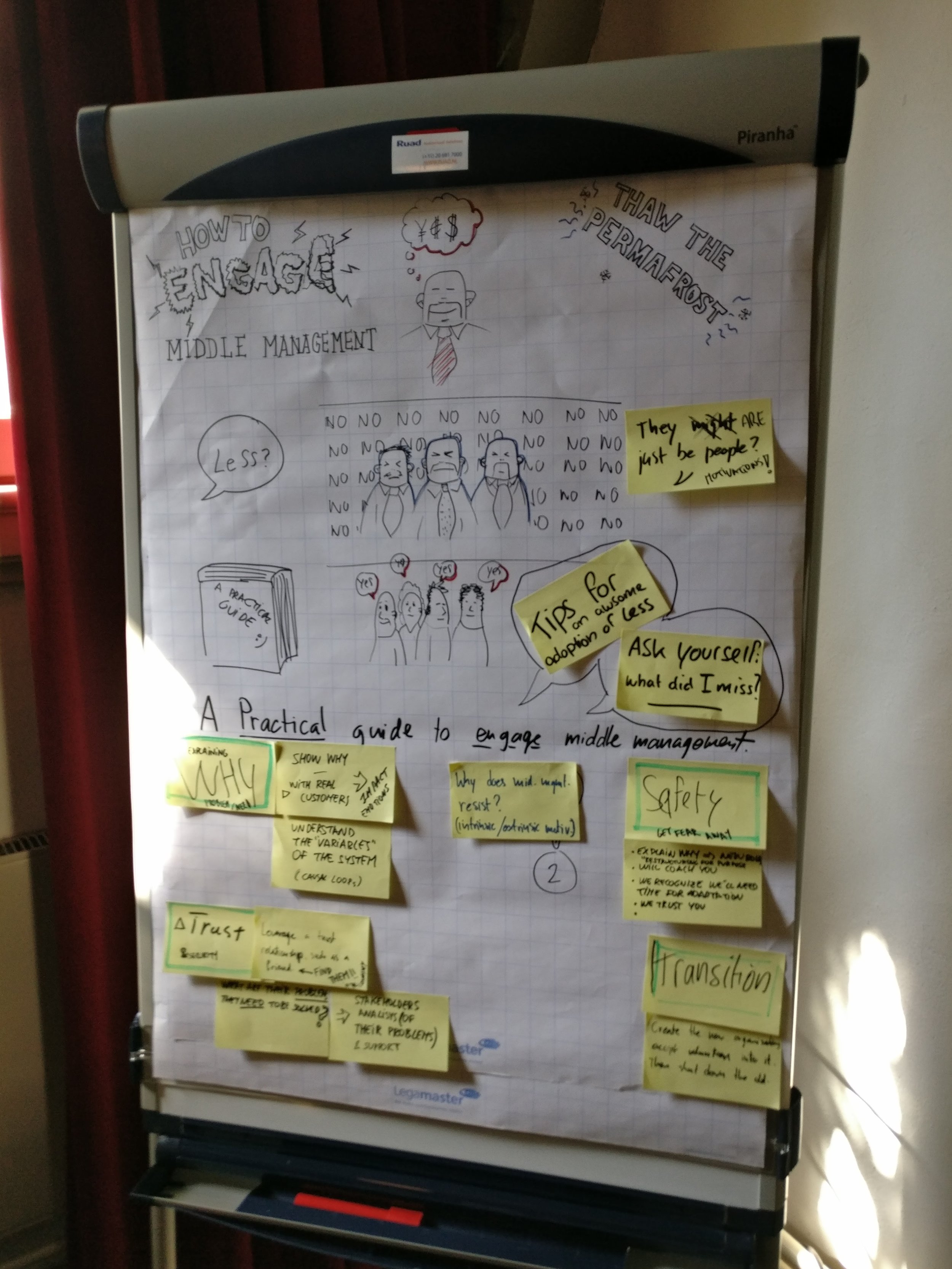
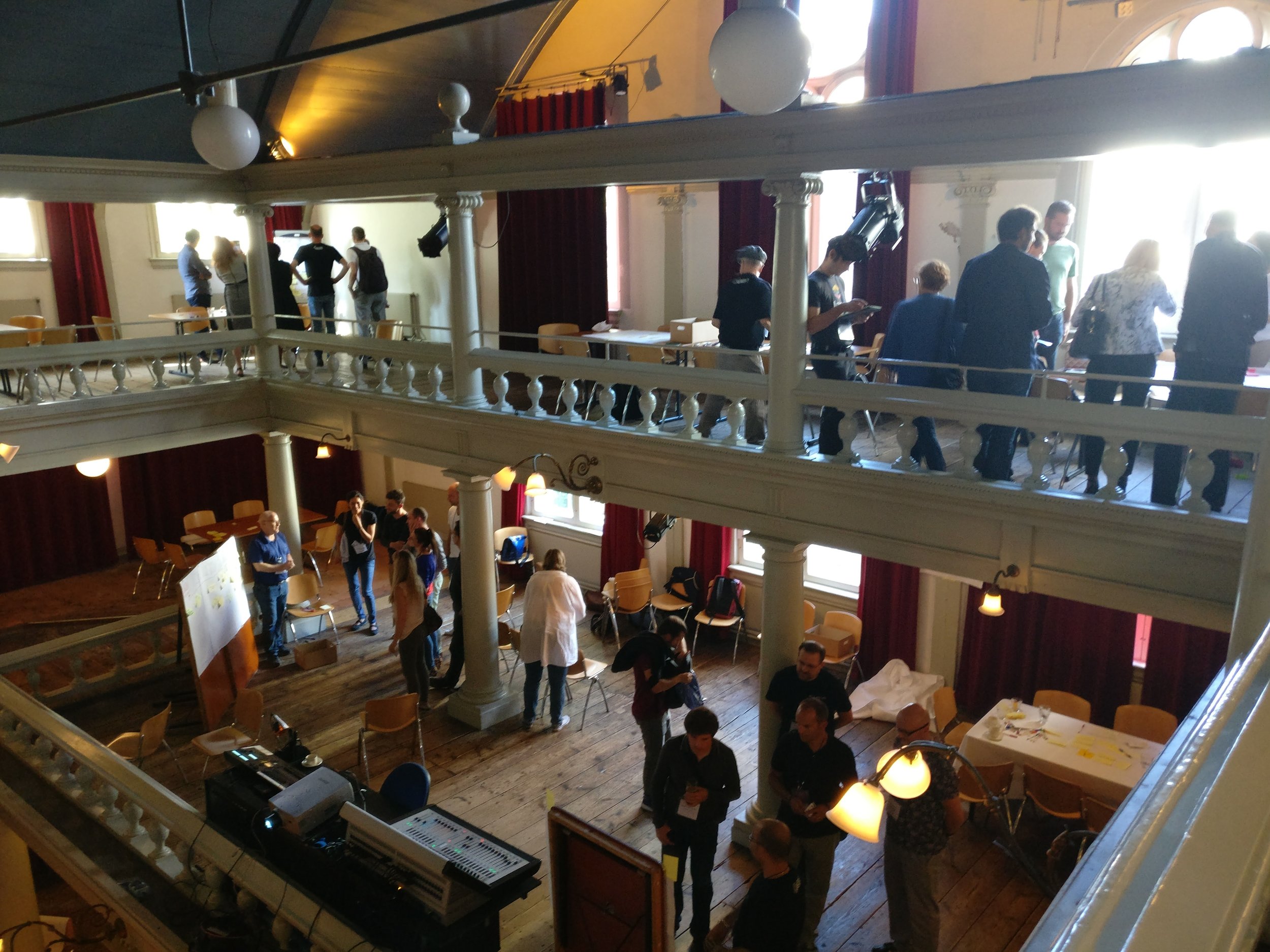

One assumption was that most people come to conferences wanting to be entertained through interesting and inspiring speeches with other interesting people. As fun as that may be, the actual benefit to the conference attendee seems minimal. At best, they walk away inspired, a couple of new thoughts & contacts. What we wanted, was a deeper learning experience through interactions over traditional speeches. The idea of teams became a central theme of the conference. This raised a number questions.
Can a team of five full-time consultants who have never organized a conference before...organize a conference using Slack? Can we create a conference optimized for learning rather than simply entertainment? Would conference attendees be willing to participate in tactile exercises rather than simply listening to interesting speeches? Would (given the opportunity to opt-out) attendees create teams designed to encourage learning through dialogue? How do you even form teams of 170 people that have never met each other?
The only way to answer these questions was through experimentation; specifically a field experiment:
Field experiments are so named to distinguish them from laboratory experiments, which enforce scientific control by testing a hypothesis in the artificial and highly controlled setting of a laboratory. Often used in the social sciences, and especially in economic analyses of education and health interventions, field experiments have the advantage that outcomes are observed in a natural setting rather than in a contrived laboratory environment. For this reason, field experiments are sometimes seen as having higher external validity than laboratory experiments. However, like natural experiments, field experiments suffer from the possibility of contamination: experimental conditions can be controlled with more precision and certainty in the lab. Yet some phenomena (e.g., voter turnout in an election) cannot be easily studied in a laboratory -Wikipediea
The experiment
The hypothesis
Having conference attendees self-organize into teams will:
- Increases the chances that you will try team self-design in their own company
- Accelerate learning through dialogue and creating a product
- Longer lasting relationships after the conference
- More fun
The procedure
1] Bejewl each attendee
As part of the registration process, each attendee was asked 4 questions. Based on the answers, each attendee received a jewel to affix to their badges.
- Are you a certified LeSS practitioner
- Are you a developer
- Have you ever tried implementing large scale scrum
- Do you have any visual artistic abilities
2] Form the teams
I had originally budgeted for 75 minutes. The whole process took roughly 60 minutes. What I covered:












- Explain the purpose and the background of the team formation exercise (see article)
- Team formation guide(see deck to the right)
- Form, storm, norm, perform in 5 minutes. After forming, I asked each team to get to know each other through a name association game and one interesting fact about themselves.
- Brand the team. Each team selected a name and some even created a logo.
- Tweet a picture of the team(see below). My idea here was that there is something about taking a picture and tweeting it to the world that would make the teams more "real".
- Explain next steps:
- Meet regularly for 30 over the next two days
- Create potentially publishable content for the scaling community
- Sprint bazaar at the end of the conference
3] Re-calibrate the teams, create a product & Review
- Re-calibrate the teams (20 minutes). On the second day, Bas facilitated a re-calibration of the teams where teams could disband or choose to join another team.
- 60 minutes to create a product. Many teams had been reflecting by creating visualizations of the conference. These final 60 minutes were to allow the teams to focus on the creation of an artifact that would be demonstrated at the sprint bazaar.
- Sprint Bazaar and choose a winning team.
- Each conference attendee was given 30,000 in LeSS money. (We are a very wealthy conference :)
- Craig reviewed the concepts behind a sprint review
- Although, competition is not part of an actual sprint review, we decided that teams competing using the LeSS money would be fun.
- Conference attendees were given 6 cycles of 5 minutes to review the team output.
- A single team won by creating a very clever game.
Observations & Initial data
- ~170 attendees
- 5 opted out of the exercise
- ~18 teams were formed
- ~11 products were created
- 1 potentially publishable content
- ~5 teams disbanded on the first and second day
- Teams formed in less than 10 minutes
- Attendees reported that the creation potentially shippable content was too aggressive a target for teams
Survey feedback
(Raw Data)
Did the teams makes the conference more fun
Did the teams increase learning
Should we do this expirement next year?
Did forming the teams increase the likelyhood that you would attempt this expirement
Did the teams increase the chances of longer lasting relationships than usual conferences
Improvement suggestions
Make process and idea clearer from the start.. Make upper limit smaller Make purpose & goal clearer Introduce a "PO"? Written instructions could probably help? -Magnus Vestin
I think when we started the team, the message wasn't clear i.e. what are we supposed to do. So clarifying that message up up-front would have helped. E.g. Creating a LeSS product based on learning from Conference and your team member knowledge could be a good description. I think we should introduce the concept of 'traveler' as well in this experiment. That way if a team is struggling with anything can call out to the traveler for any immediate help if required. -Dinesh Sharma
Give people more time to reflect, get coffee, do a toilet break etc. the team sessions where the moment where we could reflect, but most where getting coffee, visiting the toilet. i much liked the team idea.the different views on the subjects give me a broader understanding of the sessions. -Just Meddens
- Potentially publishable goal was too confusing (x4)
- Provide more information about how teams form, storm, norm & perform.
- Create teams around common interests